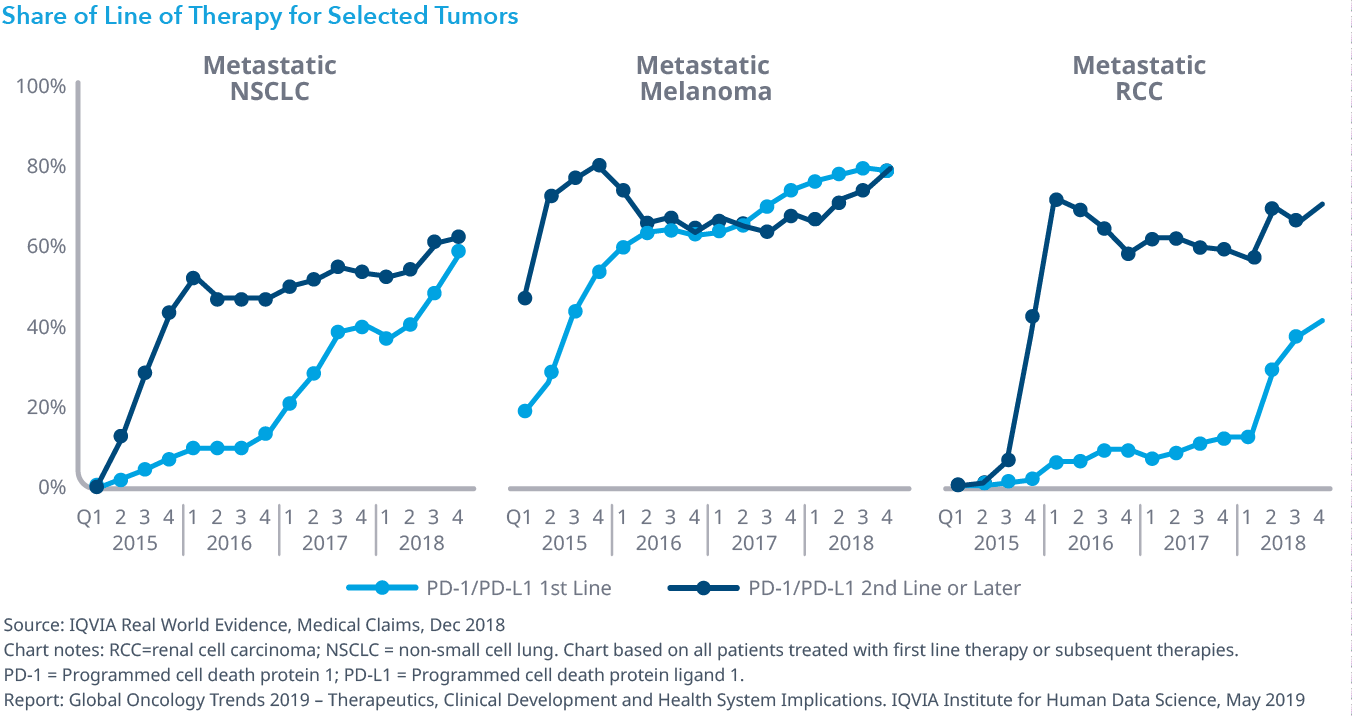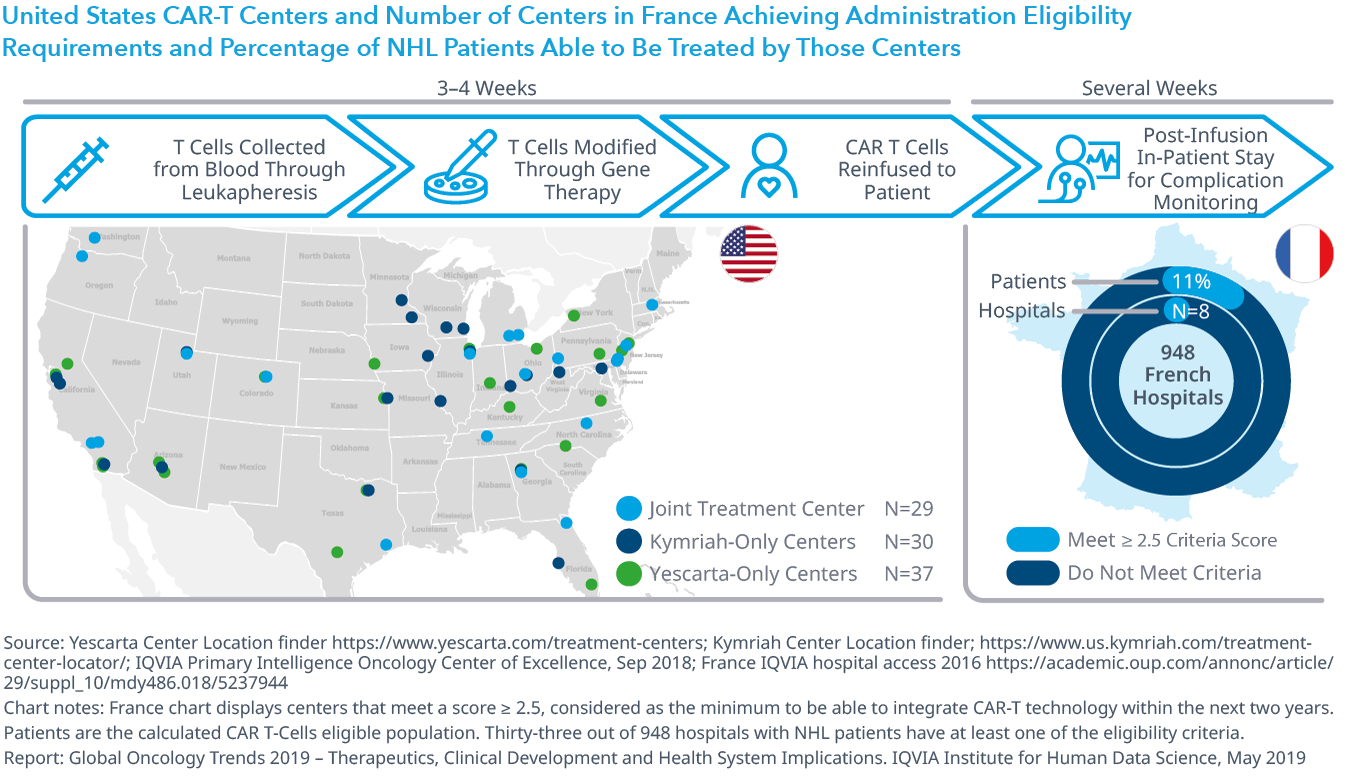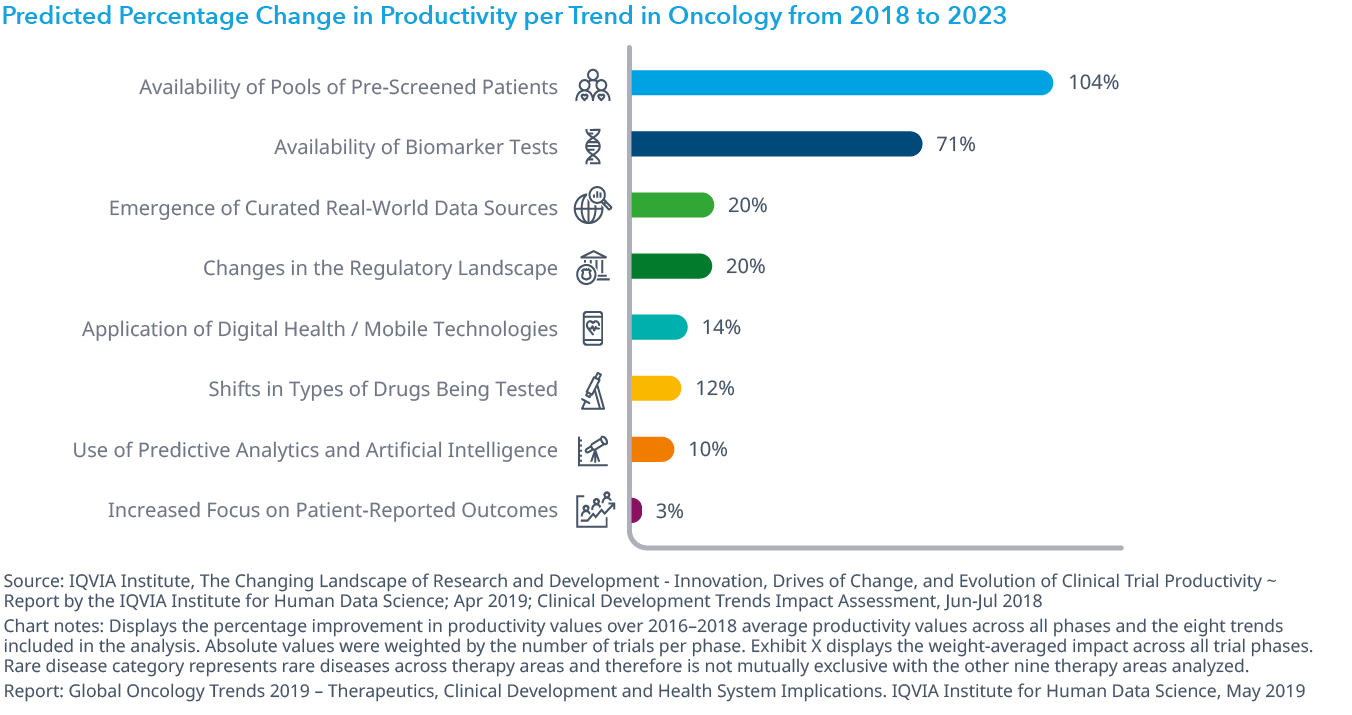





















- Blogs
- Top Five Insights from the IQVIA Institute 2019 Oncology Trends Report
Our Global Oncology Trends 2019 report is officially released, and it details the trends shaping the development and delivery of cancer treatment worldwide.
I’d like to share with you five key insights from the report. For all of the detailed, data-driven insights, download the full report and explore the trends influencing clinical development in oncology treatments today and through 2023.
- Immunotherapies are rapidly being adopted as first-line treatments
- Precision medicine and biomarkers increase trial complexity
- Spending growth continues in double digits
- Time to approval is decreasing, but delivery remains a barrier
- Trial productivity is key in this high risk, high reward therapy area
Cancer patients today have more and better treatment options than ever, with improvements in progression-free survival and new options for relapsed or refractory cancers. Immuno-oncology therapies account for many of the new options and have in just 2-3 years become first-line oncology treatments (see exhibit).

These treatments now account for more than three-quarters of all lines of therapy in metastatic melanoma.
Similarly, treatment for breast cancer, the most prevalent cancer among women, has been transformed with the introduction and rapid uptake of new options, particularly CDK4/6 inhibitors. The number of patients treated with these drugs nearly tripled in the top five European countries in the past year, now matching similar rates of use in the U.S.
Precision medicines stratify patients according to their biomarkers into those most likely to respond to therapy, for both trials and treatment. Predictive biomarkers were associated with 60% of new treatments, and three were approved with a companion diagnostic.
Biomarker testing for trials is becoming easier and more widely available, improving the selection of trial participants. Nonetheless, trial complexity may increase as novel trial designs are enabled (i.e. large basket trials with multiple arms) and as sponsors become reliant on molecular profiling companies for data.
Driving the increase in health-system spending is not only the use of new treatments, but also the use of available treatments in more patients and for longer treatment durations. Spending levels and growth rates are higher across most parts of the world, and this is expected to continue for at least the next five years. New and protected brands account for nearly all the growth in spending.
Spending on cancer drugs in the U.S. has more than doubled since 2013 and reached almost $57 billion in 2018. Outside the U.S., oncology costs exceeded $66 billion in 2018, driven by new product launches and increased volume use of existing brands.
New oncology drugs launched in 2018 went from patent filing to approval four years more quickly than drugs launched in 2017. But more than half of new cancer treatments are available only within a select nine countries, and novel therapies such as CAR-T require capabilities that are rare even in the U.S.
For example, CAR-T cancer treatments require that centers be competent to collect T cells and reintroduce them to the patient. Few cancer centers have achieved accreditation, and these centers can be thousands of miles away from a patient. In France, a 2016 study found that only eight hospitals, treating 11% of patients, met the criteria (see exhibit).

The difficulties in accessing these new treatments can place logistical and financial burdens on families and caregivers. However, because treatment time can be shorter, the total burden doesn’t necessarily increase but is borne over a shorter time period.
Overall productivity of oncology trials has improved since 2000 by 22% but remains far lower than trials for other therapy areas. Researchers are improving the productivity of trials by identifying participants from pools of pre-screened patients, which could improve productivity 104% by 2023. The use of biomarker tests is projected to yield a 71% improvement.
The following exhibit shows the possible impact of the top eight oncology trends on trial productivity over the next five years. The likely impact of each trend is detailed in the full report.

A closer look at oncology trends
The full report – Global Oncology Trends 2019 – is rich with data and exhibits illuminating the trends influencing clinical development in oncology treatments today and through 2023, including scientific advances in therapeutics, shifts in therapy use, trial productivity and success rates, as well as changes in spending patterns. I invite you to download it today, along with the full set of exhibits you can reference in your own work.





